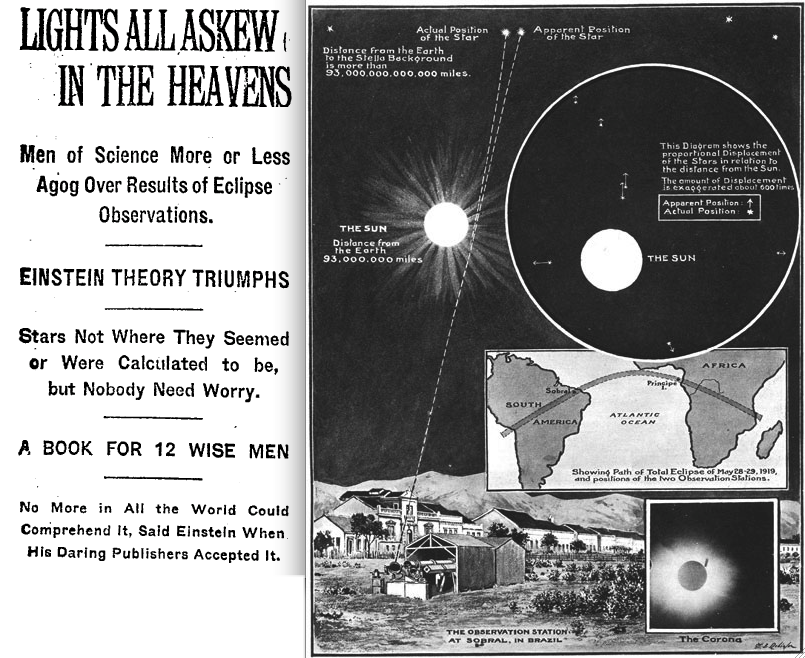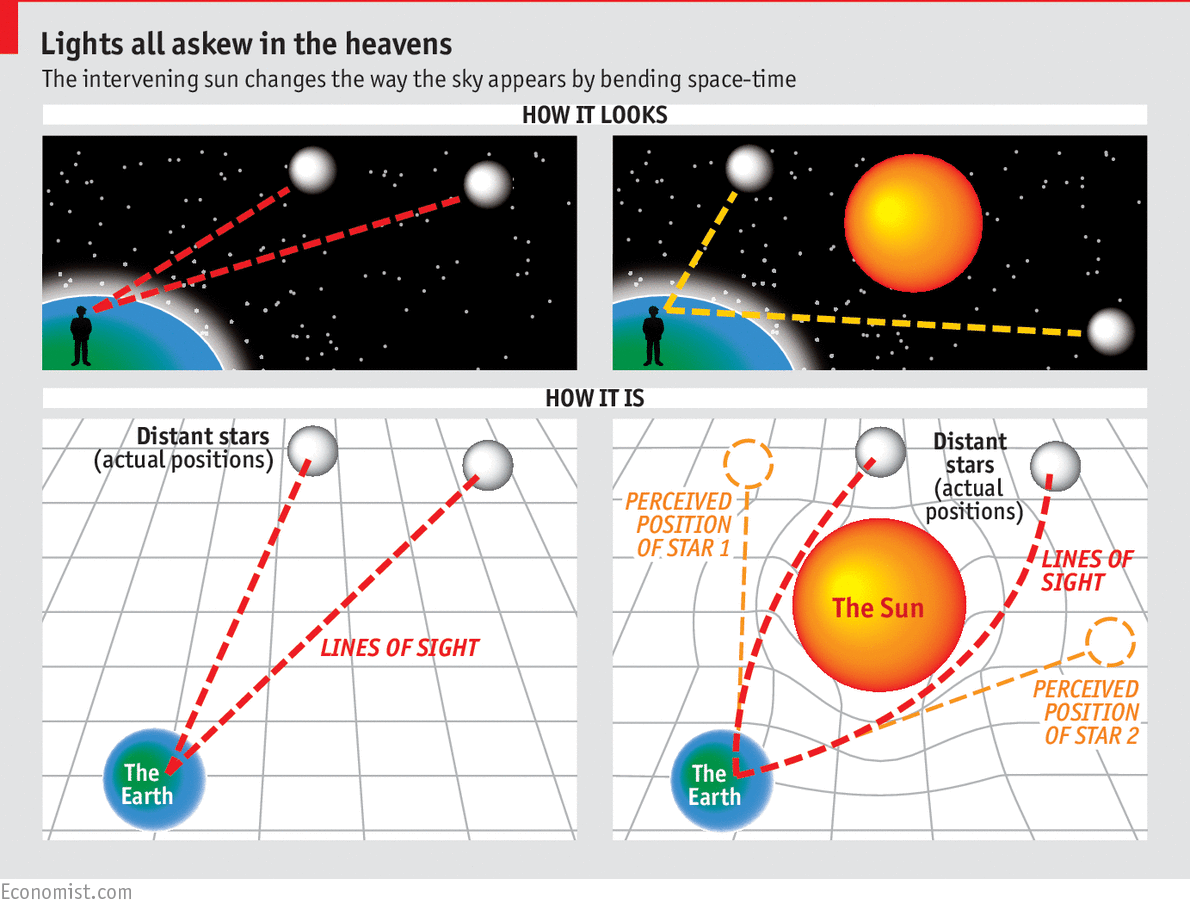 Images credit: New York Times, 10 November 1919 (L); Illustrated London News, 22 November 1919 (R).
Images credit: New York Times, 10 November 1919 (L); Illustrated London News, 22 November 1919 (R).
Notes and comments on reproducing a famous historical event.
Most people today do not know the reference to Sir Arthur Eddington, but he is responsible for making Albert Einstein a household name. In 1919, the English physicist took on an experiment that would test Einstein’s theory of gravity, general relativity, an abstract and mathematically beautiful explanation of space and time that few people at the time fully understood.
The prevailing theory of gravitation was Isaac Newton’s, one that worked to great success in explaining nearly all the motions of the planets. Einstein’s theory was a refinement that would show only tiny differences. But it is important to get this right; modern GPS navigation would not otherwise work.
Both theories predicted that light would be deflected by gravity. The light from a star positioned near the sun’s edge would be bent, like a mirage, to an apparent position slightly shifted from where it would normally be. But Einstein’s theory predicted the deflection to be twice that of Newton’s.

It is impossible to see such stars while looking at the sun because, well, it is daytime. Even if you block the direct view of the sun, the scattered skylight washes out all but the very brightest of stars and planets. During a total solar eclipse however, the moon’s shadow makes a hole in the sky and the stars become visible.
Eddington’s experiment then, was to photographically record the nearby stars during the eclipse and measure the apparent deflections from their true positions. He mounted an expedition to a small island off the coast of Africa for the eclipse of May 29, 1919, where he encountered the usual problems that astronomers face: bad weather. It rained in the morning, and clouds obscured the view. They had thinned somewhat by the time of the eclipse, and his team forged ahead and made sixteen exposures on various photographic emulsions on 8”x10” glass plates.
It is fascinating to read the account of obtaining these photographs (as reported in the Philosophical Transactions of the Royal Society of London). Totality for this eclipse was long: six minutes, which allowed the manipulation of the large plates to be placed in position in the telescope, the large refractor from Oxford that had been dismantled, packed and transported. It was stopped down to 8” in order to use the best part of the lens. The clock drive was driven by a weight, and a pit was dug “deep enough to allow a run of 36 minutes without rewinding.”
All but two of the plates failed to show measurable stars, mostly due to the cloud cover. But that was enough. Combined with the results from a sister expedition to Brasil, Eddington’s analysis showed that the observed deflections were best explained by Einstein’s theory. These results were reported later that year, and the world found it fascinating. Einstein, previously known and respected only in a select group of theoretical physicists, became a celebrity.
Eddington made these measurements nearly a hundred years ago. Although he suffered poor weather, he had many things going for him. A long duration eclipse, and a collection of bright stars in the near field of the sun, made it possible using early 20th century technology to make a precision measurement. He recognized this, and at the end of the report wrote: “The unusually favourable conditions of the 1919 eclipse will not recur, and it will be necessary to photograph fainter stars, and these will probably be at greater distance from the sun.”
Well, we are a hundred years on from that groundbreaking experiment. One would think that modern optics and photographic equipment would make this an easy exercise. And indeed, it has become a goal for amateur astronomers. The Astronomical League, an umbrella organization of local amateur astronomy clubs has offered a special observing award to those amateurs that can detect the deflection of starlight during the eclipse of 2017.
But even with the advantages of a century of technological advance, this is a difficult measurement to make. Yes, we don’t have to worry about how long the clock drive will run before we need to reset the weights, and our optics are better, and the photographic emulsions have been replaced by digital sensors, but the measurement still involves finding stellar deflections that are smaller than a pixel!
My exploration into this project has uncovered some interesting details, which I will share in the following blog entries. They start with a general introduction of celestial coordinates, and an outline of my plan, but then might become somewhat tedious as I devolve into some of the image processing and mathematical details. Much of it may be of little interest except maybe to other Eddington experimenters, but if you find it useful in some way, or wish to make contributions, feel free to add commentary.
Here are some useful entry points:

Pingback: Eclipse Party 2024 – photo planning | Thor's Life-Notes
Pingback: Eclipse Party 2024 – photo planning | Thor's Life Notes